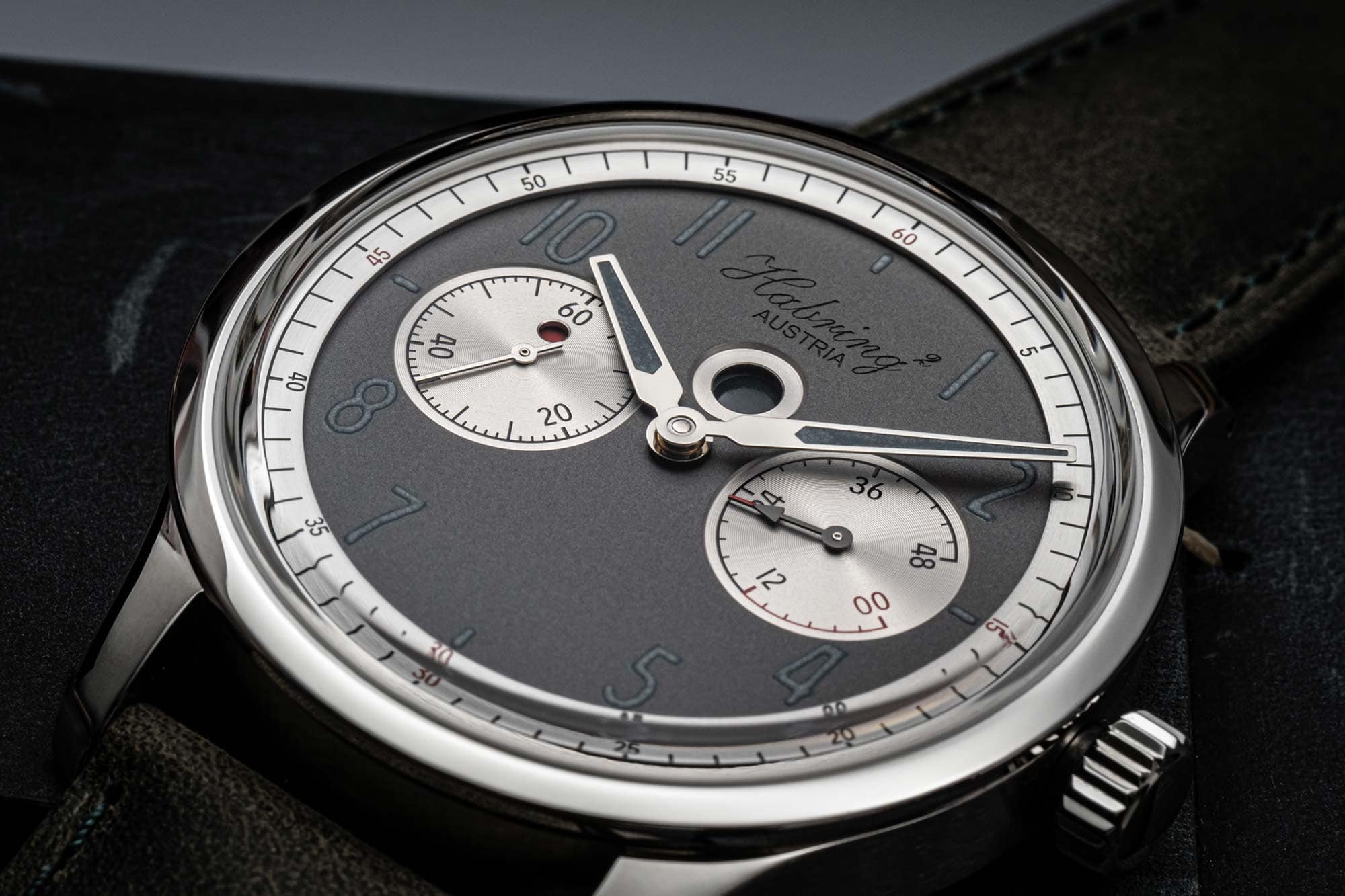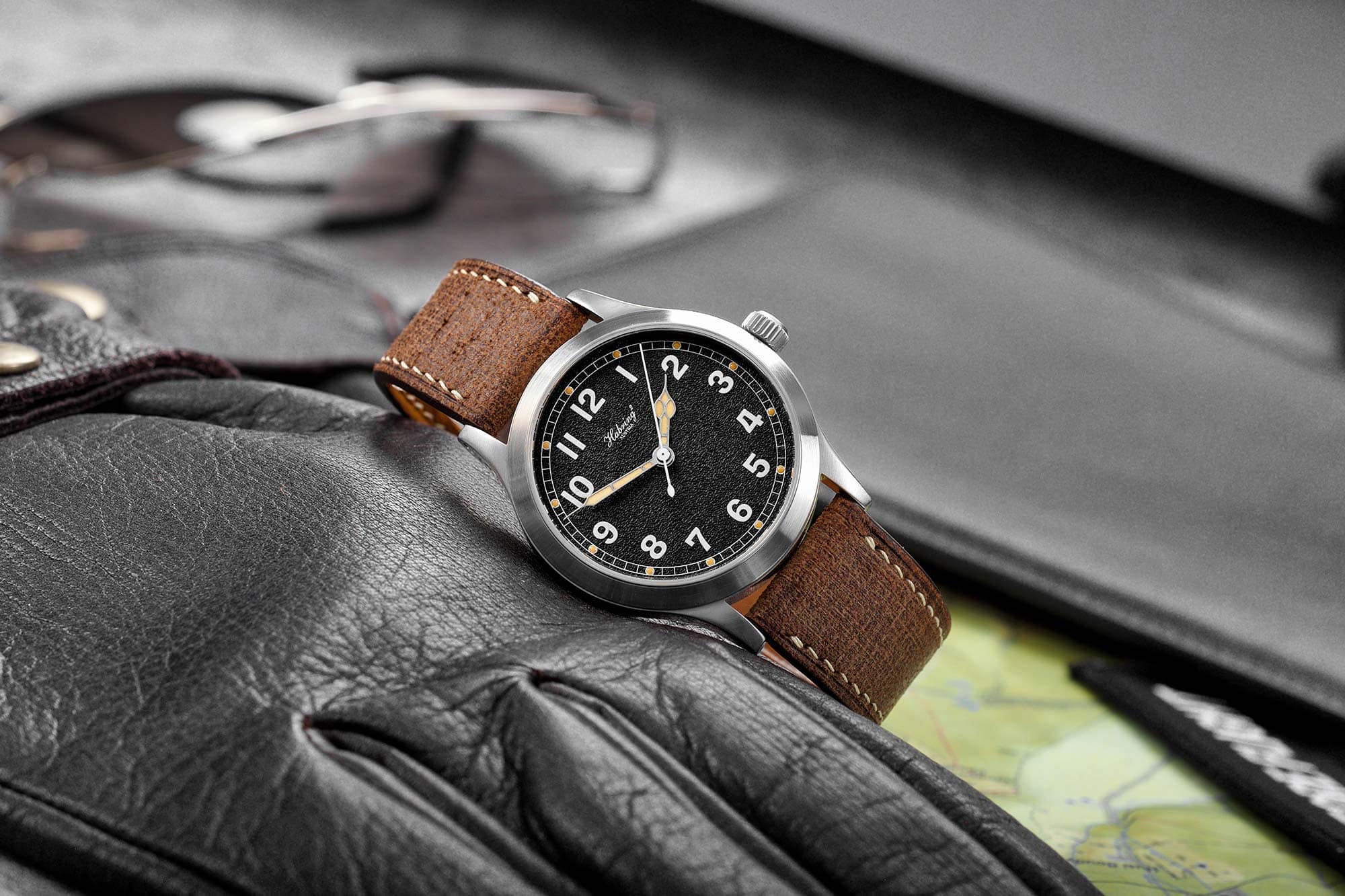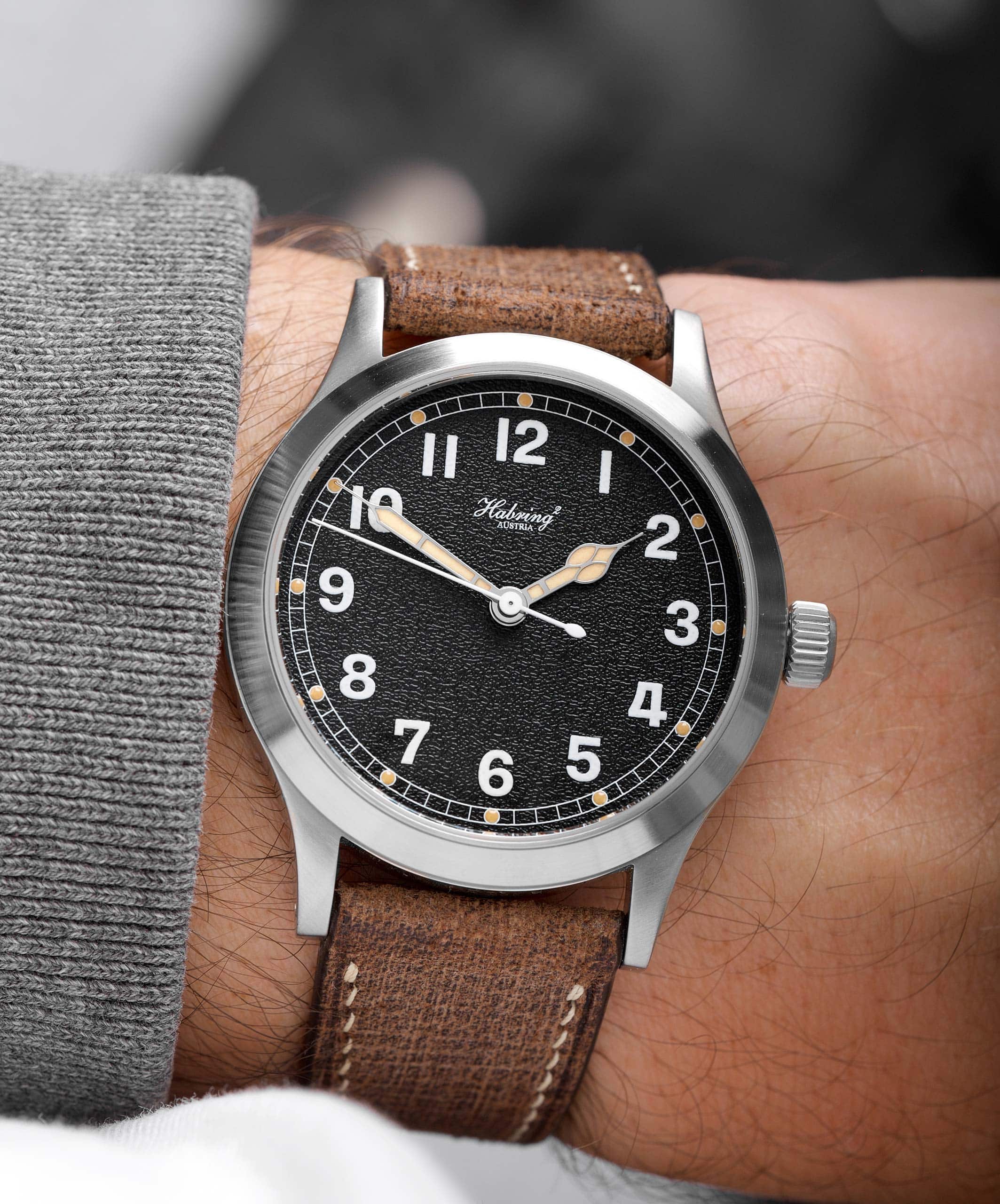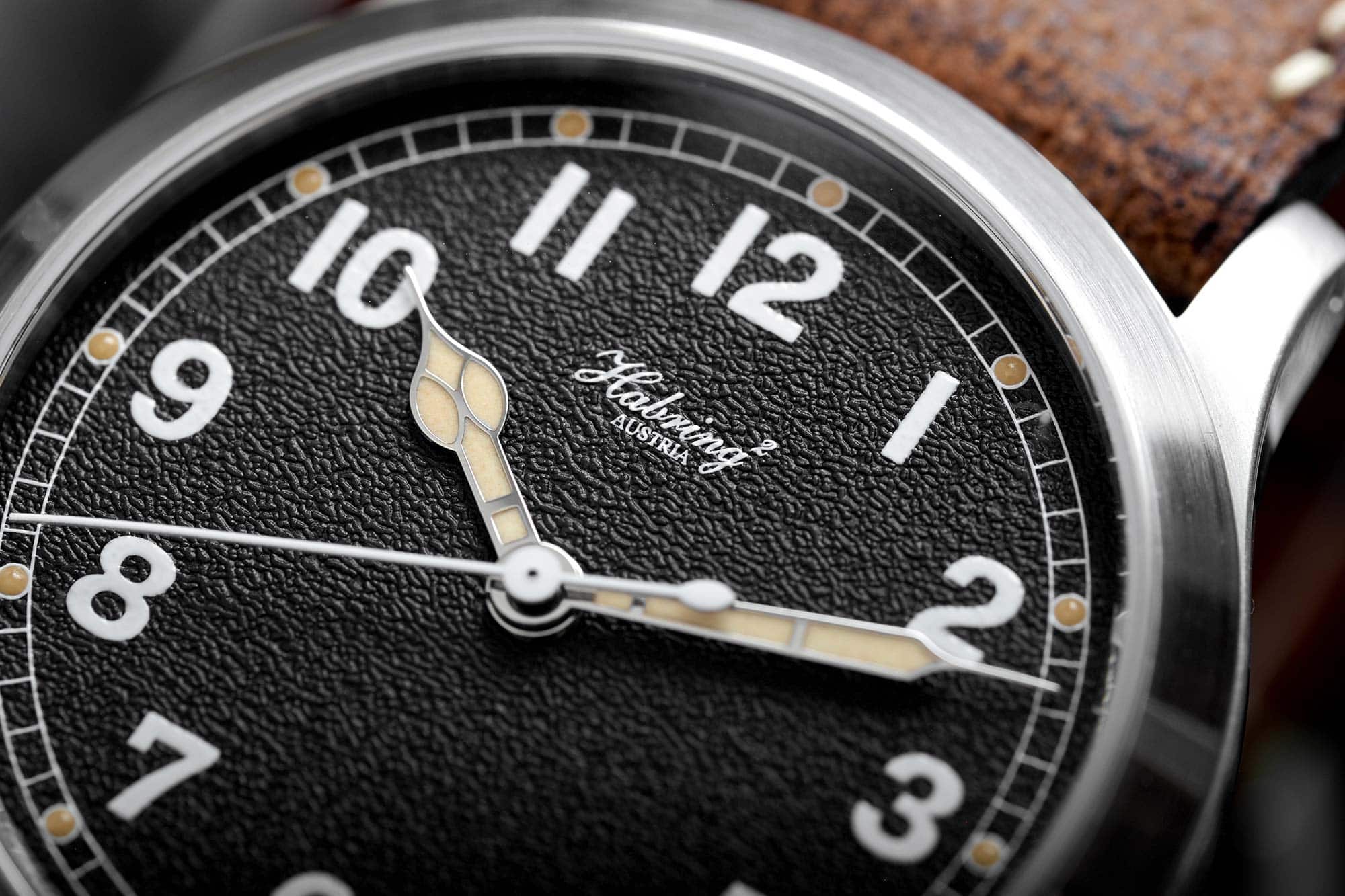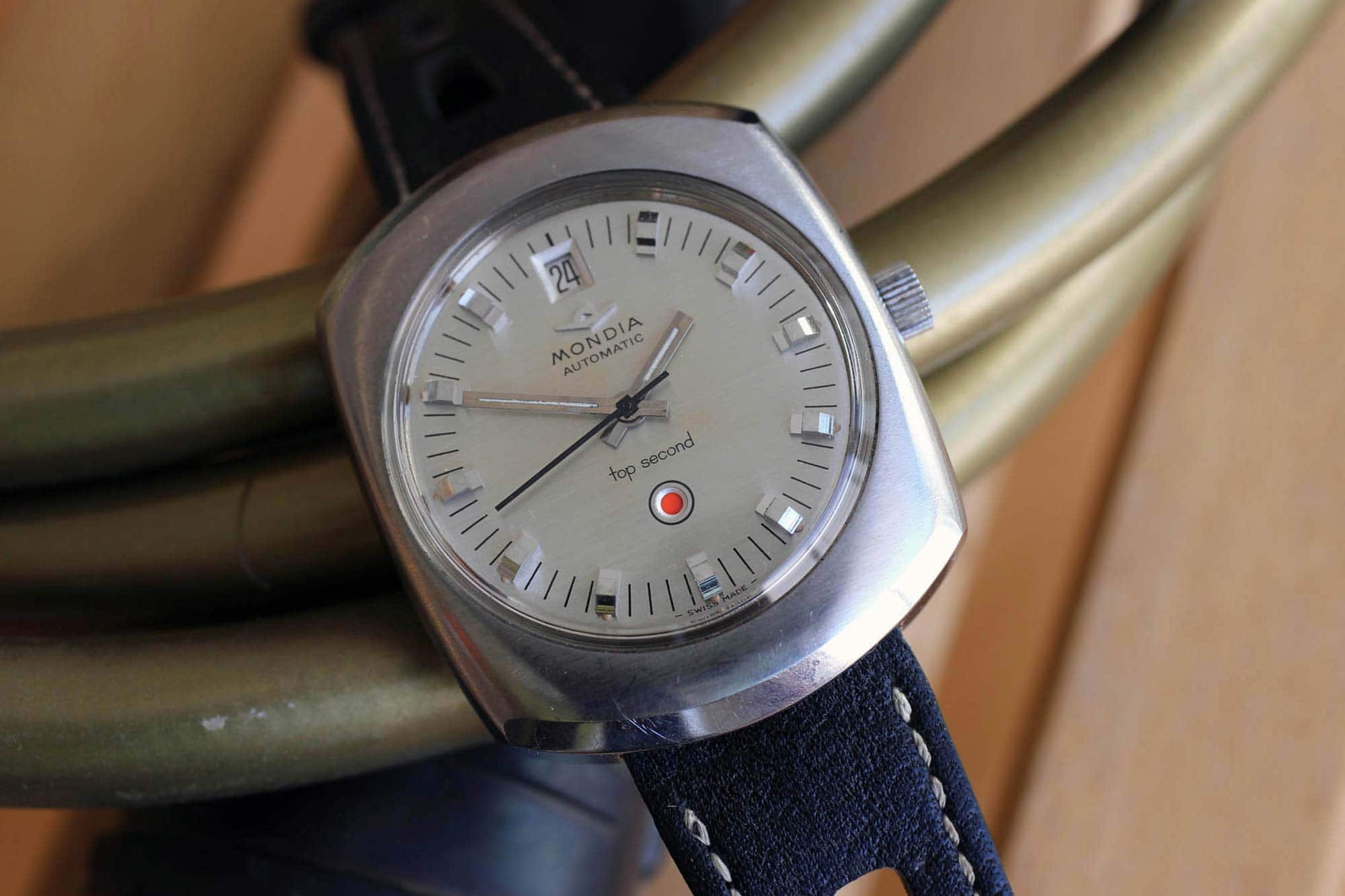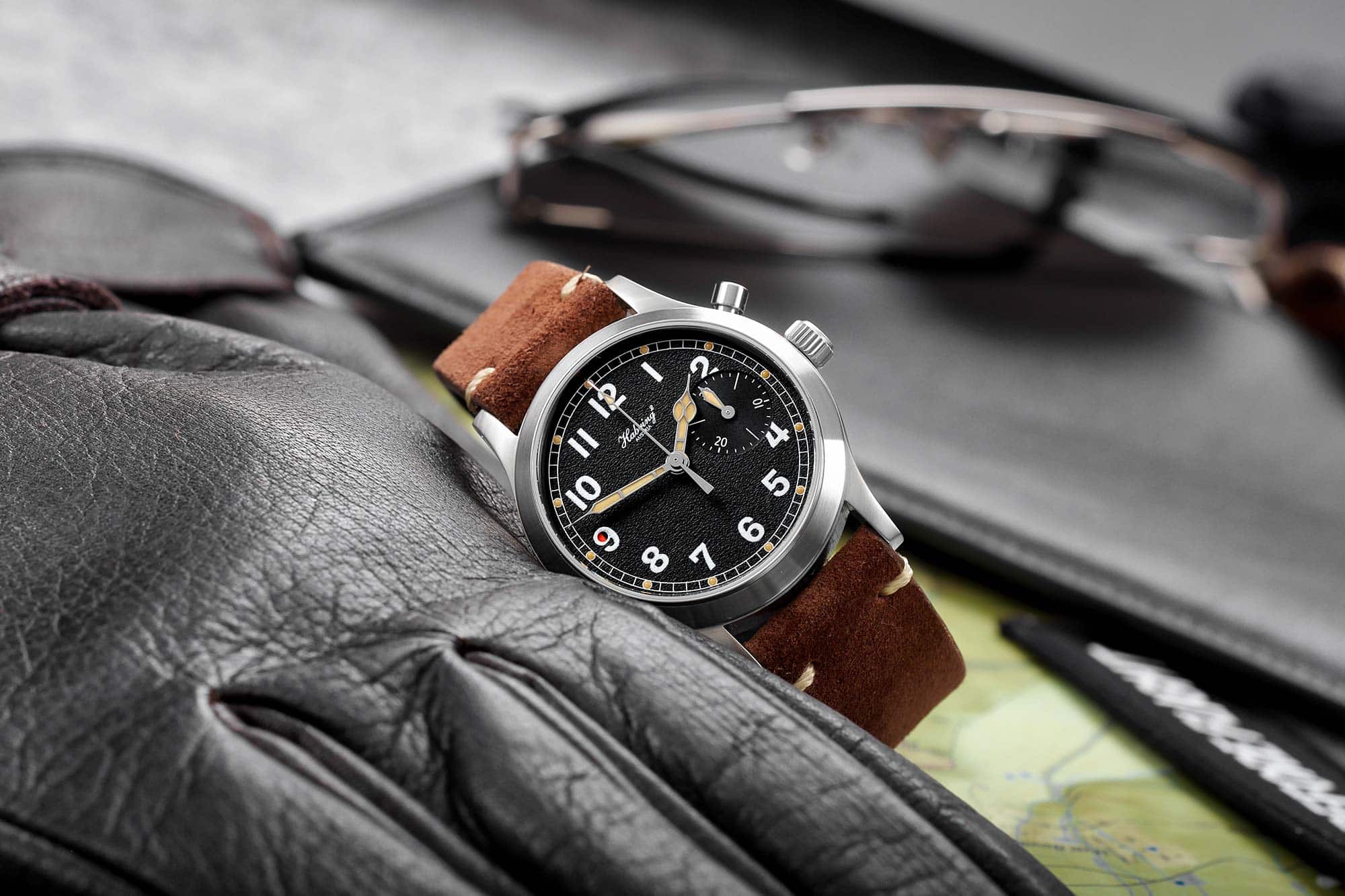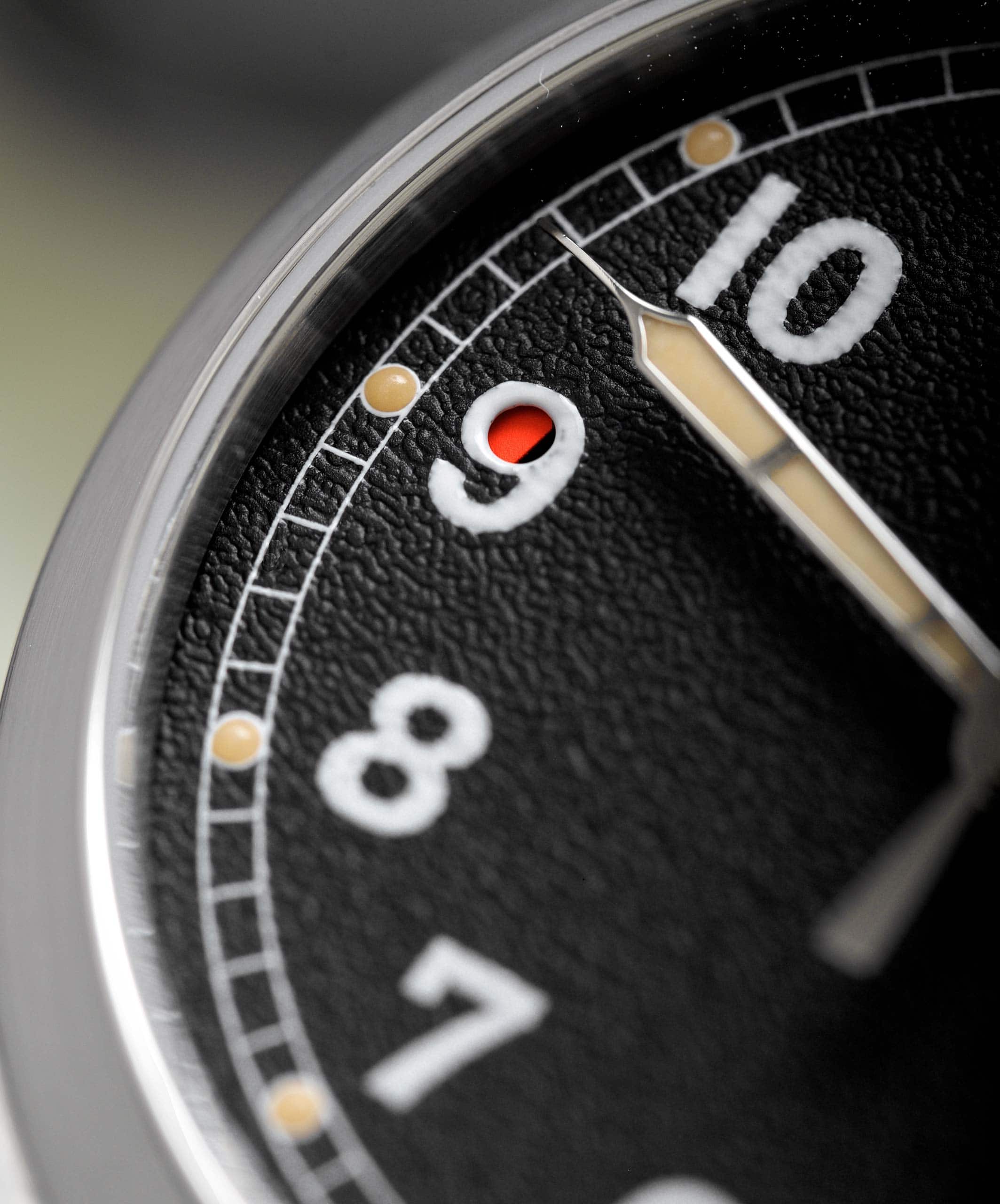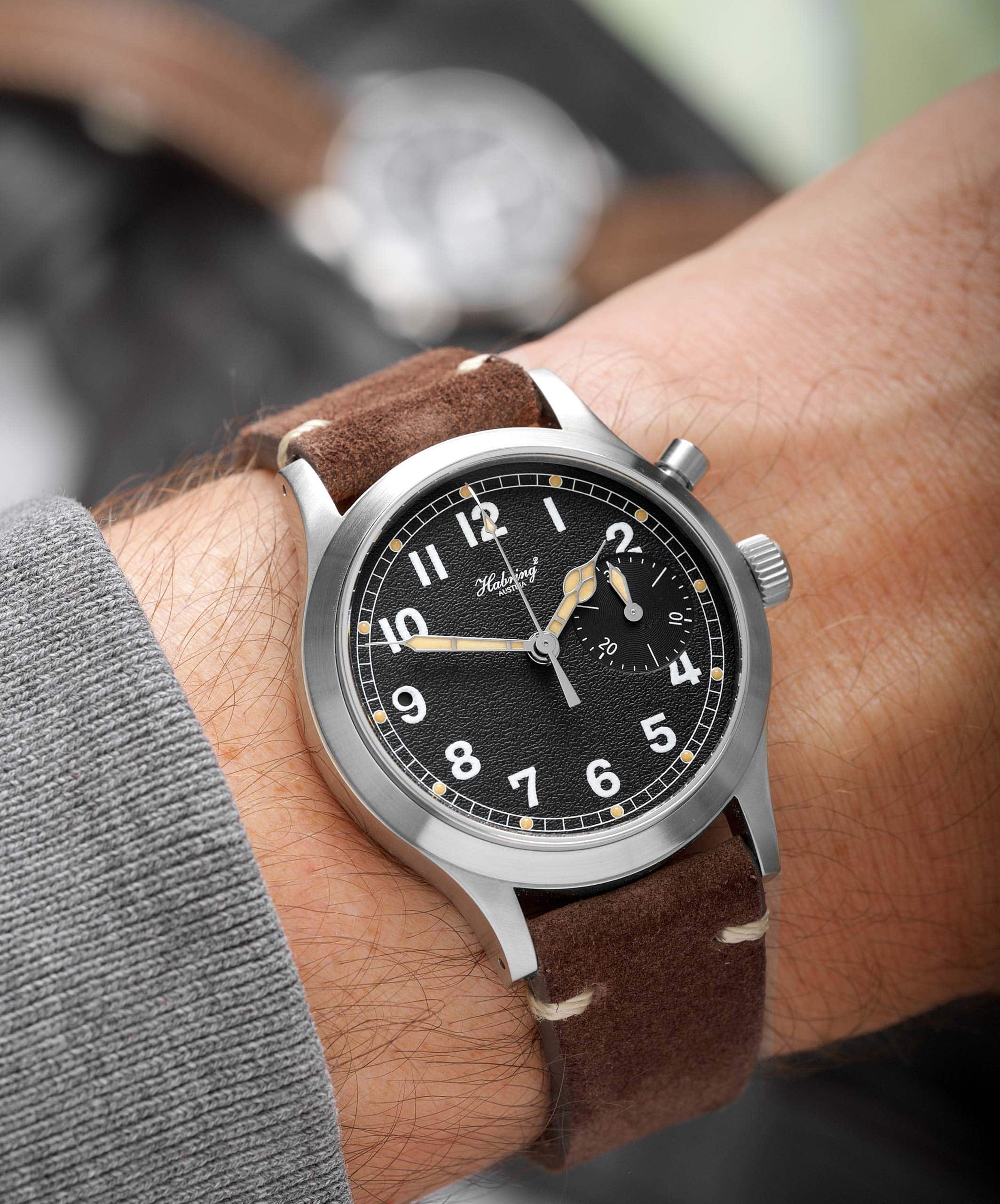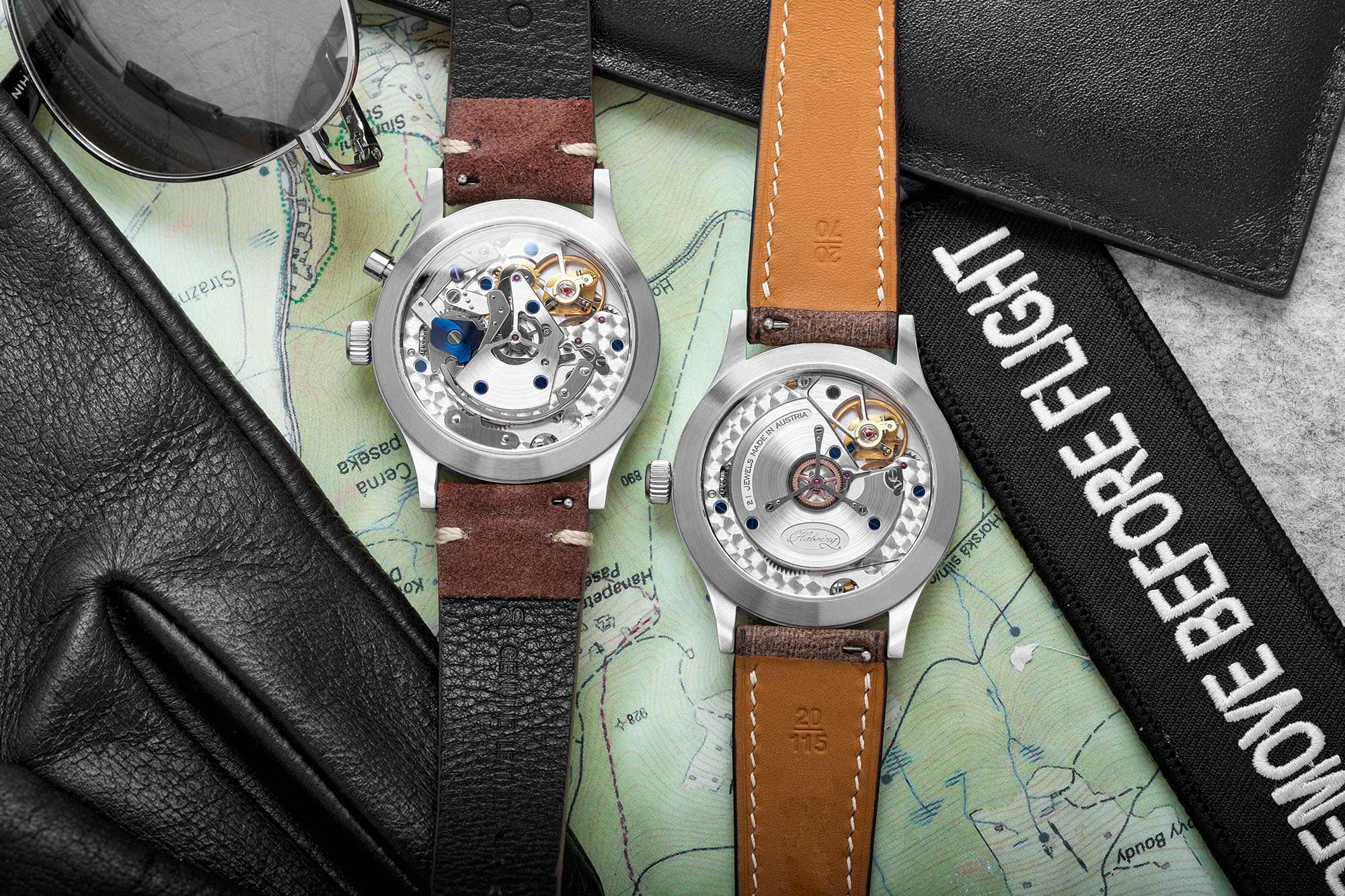My journey with Habring² started back in 2009 when my girlfriend (now wife) and I decided to spend a cozy weekend in Vienna. At the time, I was living and working in Prague, thus it was an easy drive to Vienna. On a chilly November morning, after a delightful breakfast, we wandered through the city. That’s when I noticed these enormous banners showcasing various watch brands for an event called Vienna Time. Among them was a banner for Habring². I had been a fan of the brand but had never seen any of their watches in person. So, I jumped at the chance to visit and meet the brand’s founders, Richard and Maria Habring.
Fast forward to today, after knowing the Habrings for so many years, I can honestly say they are some of the most down-to-earth and caring people you’ll ever meet. And it shows in their watchmaking too. I like to call it “honest watchmaking.” Their watches are reasonably priced, especially considering the various complications they offer. Even the packaging is charmingly unpretentious—a compact wooden box that simply says, “made with love.” In this box, the Habrings also include spare parts necessary for the first service with our preferred local watchmaker—a practical consideration.
The Habrings do not like to discuss Richard’s past accomplishments at various big brands like IWC and Lange. However, they are well documented online. As a primer, I would recommend reading this Hodinkee article by Jason Heaton, and this WatchProZine write-up by Don Corson.
Let’s dive into the tale of two fun and rare complications!
A handful of master watchmakers have excelled at crafting incredibly cool complications by using existing pedestrian movements or designing simplified in-house movements as a starting point. One of the most legendary is Kurt Klaus, who used a module on top of the Valjoux 7750 to create the IWC Da Vinci perpetual calendar, allowing all adjustments to be made through the crown. Paul Gerber similarly took a 7750 and integrated an alarm complication for his automatic Fortis chronograph, a watchmaking first (he later developed the triple rotor under his own brand). Then there’s Ludwig Oechslin’s calendar complication, again based on the Valjoux 7750, for the MIH watch, and Jean-Marc Wiederrecht’s work to create lateral, linear, jumping, and retrograde hours based on the ETA 2892 for Romain Jerome’s ultra-cool Spacecraft.
Habring² has inherited this tradition of ingenuity, and in my humble opinion, they are currently the undeniable maestros of clever and cool complications. Their COS chronograph features a start-stop-reset function controlled entirely by the crown. The Doppel 38 is a compact, slim, manual winding split-seconds chronograph (rattrapante). The Erwin model is fitted with a jumping seconds complication, where the seconds hand “jumps” every second, similar to a quartz movement. The Foudroyante-Felix model showcases a unique combination of slow jumping seconds and a continuously “flashing seconds” (Foudroyante) that measures ⅛ of a second increments. The Habrings have also added a five-minute repeater that chimes the hours and five-minute intervals, and a perpetual calendar to their well-rounded collection of clever complications. The brilliance lies not only in the function of the complications but also in their design.
The Erwin Pilot and Chrono-Felix Top Second dial appear almost identical. However, I have been wearing the Erwin for over three years and Chrono-Felix since last year, and I can report that they are very different watches to wear and experience.
Erwin Pilot Watch
All the Erwin variations by Habring² are deceptively simple watches. In photos they look like any other 3-hander, but in reality, the dead-beat seconds complication is very satisfying to wear.
Before delving into the dead-beat seconds complication, it is pertinent to first commend the dial of the Erwin Pilot watch. At first glance, it presents itself as a vintage “Flieger” style dial, characterized by central seconds, cathedral hands with old radium luminescence, white Arabic numerals, and a matte black finish. However, the lacquered texture of the dial elevates this vintage aesthetic, transforming the Pilot into an appealing and highly photogenic modern piece. It is not a purists pilot’s watch, since it has a minute track – an element borrowed from vintage field watches. The modern Hamilton Khaki Pilot Pioneer also uses similar design elements.
While the dial is certainly impressive, it is the dead-beat seconds complication that truly captured my attention. At first glance, one might assume that the watch is powered by a quartz movement, as the seconds hand ticks once per second, similar to a quartz watch. However, this watch, in fact, is driven by an intricately designed mechanical movement.
In a conventional mechanical watch, the spring-powered seconds hand typically oscillates between 5 to 10 times per second. In contrast, a dead-beat seconds watch ticks precisely once per second. There are a few ways to achieve this rare complication. For instance, Gronefeld utilizes two distinct gear trains—one dedicated to the seconds hand and the other to the hour and minute hands—to accomplish the dead-beat seconds functionality.
Habring² employs a jumping second module on their in-house gear train in the A11S movement. In fact, the Felix model with A11 movement has been around for a while. The Habrings were awarded the GPHG award for the Felix in 2015. This in-house movement took them four years to develop and manufacture. The A11 shares some components with the Valjoux 7750 (Richard has a well-documented history with the 7750), and they partnered with suppliers in Germany, Switzerland, and Austria to produce the remaining parts needed for the movement. Their goal was and remains to be completely independent from relying on other movement manufactures. To that end, the A11 has become the base caliber for all the Habring watches.
In the last few years, Habring²’s 316L steel cases have been crafted in Austria using raw materials sourced from the renowned steel specialist Böhler, based in the city of Linz. Previously, Habring cases were made by Fricker, who closed operations in 2019. The crown is double-sealed, and Habring states that their watches are watertight up to a depth of 30 meters – similar to what Patek announced this year at Watches & Wonders. At first this might sound confusing, but it is actually quite simple – you can dive up to 30 meters.
Chrono-Felix Top-Second
The Chrono-Felix Top-Second is the latest clever complication from Richard and Maria Habring. So, what’s this Top-Second complication all about? Well, back in the 1960s, the Swiss-based Mondia watch company came up with this unique feature, but both the complication and the company faded into the background when Mondia was acquired by Zenith. You can still find vintage pieces for a few hundred dollars. The idea is pretty neat—a flashing dot on the dial that switches between red and black to show that the watch is running.
The science behind it is brilliantly simple. The flashing red dot is made by a tiny spinning propeller with two blades, completing a full spin every 2 seconds. When the red blade passes under a hole, it creates a flashing effect every second. The propeller gets its power from an extra wheel in the gear train. For anyone wearing it, this is one of the most entertaining complications in watchmaking.
In my opinion, Habring² has taken this “flashing” concept to the next level with their Chrono-Felix Top-Second. Unlike Mondia, the propeller in Habring’s version rotates every 5 seconds, making the red dot flash every 2.5 seconds. It’s like moving from a super-fast Presto tempo (Foudroyante) to a more relaxed Allegro. Habring² also offers a Foudroyante – or flashing seconds complication – that makes one revolution per second at incredible speed.
The Habrings even have their own spin on this complication:
“The exciting question remains, what the proud wearer of this model can do in 5 seconds (2 x 2.5 seconds) until the little propeller has turned in each case. Of course, the new Felix model measures the short time, as a chronograph should. But on top of that, the 5-second rhythm can help with time management. At least that’s what motivational coach Mel Robbins says when she recommends an inner countdown if you just don’t feel like doing some unpleasant task. This is what does the trick: For example, you decide to make an unpleasant phone call that you’ve been putting off again and again. Then you count backwards: 5,4,3,2,1 and dial the number on your smartphone. Supposedly, the 5-second countdown activates the so-called prefrontal cortex. This brain region is responsible for conscious decisions.”
Another cool upgrade Habring² made is integrating the flashing dot within the number 9 on the dial. It’s a seamless part of the dial now, unlike Mondia’s separate display. Plus, they got rid of the running seconds at 9 o’clock with this feature.
Now, let us delve into the “Chrono-Felix” aspect of the watch. Habring has ingeniously integrated the Top-Second complication with a mono-pusher chronograph, which features a 30-minute counter located at the 3 o’clock position. The Chrono-Felix Top-Second maintains the same 38.5mm diameter as the Erwin Pilot and possesses a case height of 11mm, a notable achievement considering the watch houses dual complications.
Fun fact: Habring actually introduced the Top-Second complication in 2022 for a special 30-piece limited edition for CronotempVs collectors, where it was integrated within the sub-dial along with a day-night indicator.
As for the movement, it’s their in-house developed, manually wound caliber A11FC. Again, the base caliber is the A11, with a chronograph module. It’s got an antimagnetic escapement with a Carl Haas balance hairspring in chronometer quality, offering a 48-hour power reserve. The movement finishing is top-notch with polished bevels, decorative ribbing, and perlage—all done by hand.
If you were to ask me which one of the two watches is my favorite, my response is that they are similar, but so different. If I want something easy for grab ‘n go wear, I prefer the Erwin with no-date option. It is also a watch that receives many compliments from others. The Chrono-Felix on other hand is more a watch that impresses me and the “Top-Second” complication is not very noticeable by others. Perhaps the Habring’s philosophy of an inner countdown has some merit to it.
The Erwin Pilot retails for 6,050 Euros, and the Chrono-Felix Top-Second retails for 8,050 Euros (both inclusive of VAT). Habring²




